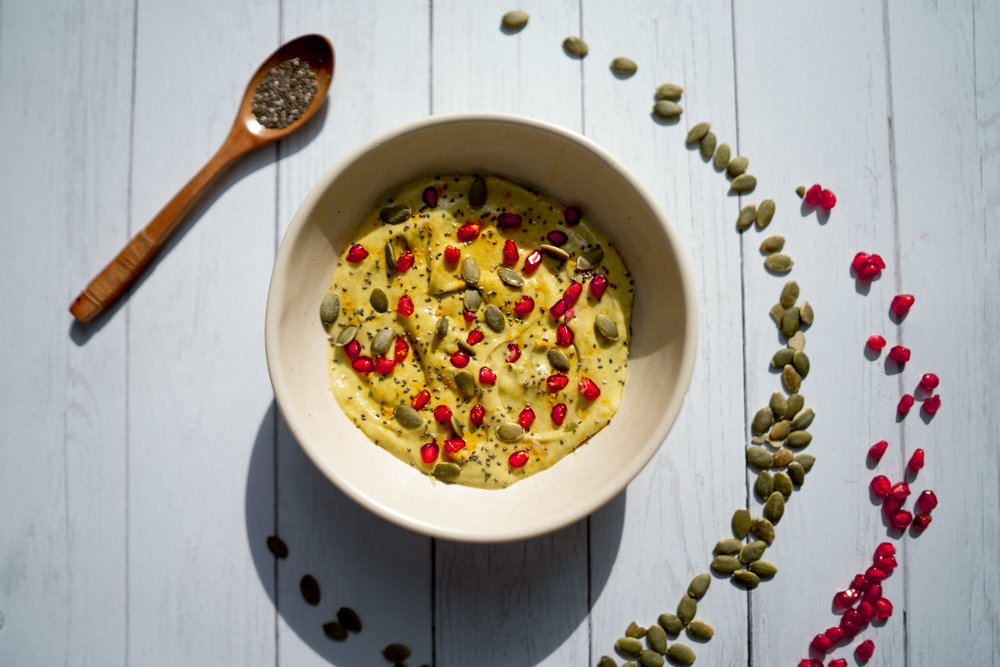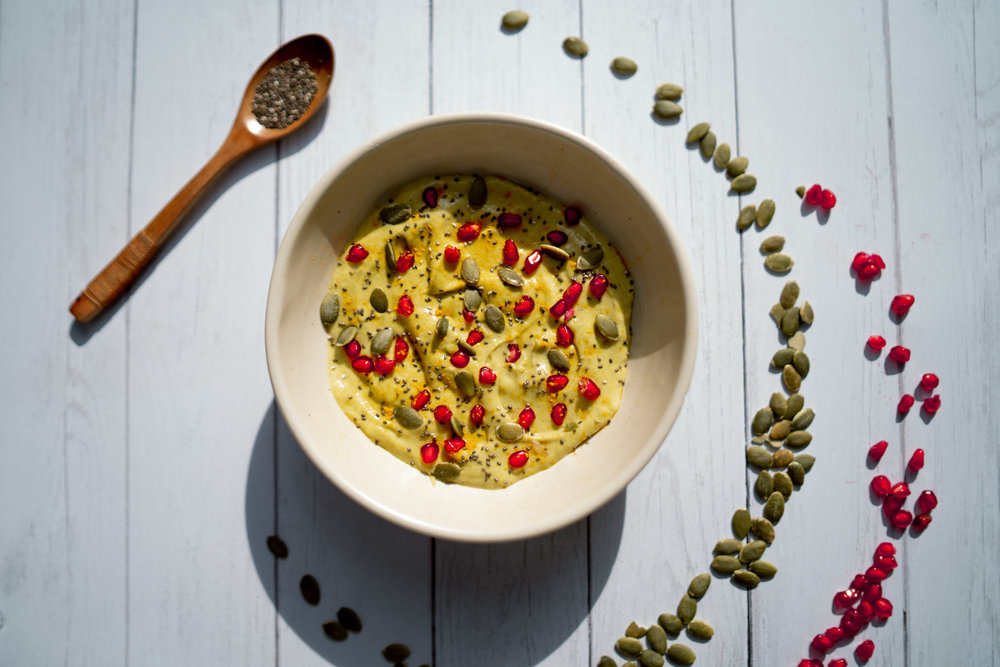Sarah X Hannah: Let’s Talk About Fats
Over the years, fats have received a bad rep- due to misinformation and dodgy media reports. Following a low-fat diet became a popular weight loss strategy, and fats were grouped together and blamed for causing heart disease and a range of other health conditions. However a number of studies have shown
that diets that are high in protein and fat can have a number of positive impacts on our health
Good fats can improve hormonal functioning, heart health
Good fats can be key to maintaining a healthy weight
The truth is that fats have been heavily misunderstood and it’s time we rethink limiting them in our diets. Don’t get us wrong, not all fats are required in large quantities, but as with everything, it’s all about finding the balance- particularly in your intake of omega-3 and omega-6 polyunsaturated fats.
Lets’ break this down :
Why do we need fats in our diet?
Fats are a concentrated energy source, they contain essential fatty acids and they are required for the absorption of fat soluble vitamins (A,D,E & K), to support cell growth, and for the production of hormones (to name a few).
What are the different types of fats?
There are two main types of fat found in foods; saturated and unsaturated fatty acids.
Unsaturated fats can be further sub-divided into polyunsaturated or monounsaturated. These are wonderful, healthy fats that we like, found primarily in oils from plant and fish. Monounsaturated fats are very good for you, particularly for your heart as they maintain HDL levels (good cholesterol) and lower LDL levels (bad cholesterol).
Sources of monounsaturated fats:
Nuts including almonds, peanuts, cashew nuts, brazil nuts, walnuts
Avocados, olive oil, rapeseed oil, nut oils, pumpkin seeds, sesame seeds
Polyunsaturated fats have also been found to lower LDL levels. There are two main types: omega-3 and omega-6 polyunsaturated fats.
Sources of omega-3 include:
Seeds: hemp, chia, flax
Walnuts
Leafy vegetables
Seaweed and algae
Oily fish such as sardines, mackerel, salmon and shrimp
Omega-6 is primarily found in plant oils, sources include:
Rapeseed oil, safflower and soybean oil
Pumpkin seeds, hemp seeds, sunflower seeds, walnuts
Saturated fats are found in animal sources such as butter, meat, cheese, creams as well as in certain plant sources including coconut oil and palm oil. Foods high in saturated fats include: butter, cheese, some meat (fatty beef, poultry with skin,pork, processed meats, cold cuts, bacon) and foods which contain these types of fats such as packaged biscuits, cakes, pizza.
Trans fats are unsaturated fats that have been heavily processed and hence their profile is more like that of saturated fats. Trans fats have been known to cause health problems including increasing bad cholesterol levels. Trans fats are found frequently in packaged foods and fast-food. They may also be listed on the ingredient list as ‘partially hydrogenated oils’. Cookies, crackers, doughnuts, muffins and cakes are a few examples of foods that may contain these trans fats. Products can only be listed as ‘zero trans fat’ if they contain between 0-0.5gm of trans fat per serving.
How much fat do we need?
Now that we’ve established that not all fat is bad for us, let’s look into the right quantities of these healthy fats that can help improve our health. We should actively aim to consume healthy fats each day. You can refer back to our previous blog about balanced eating for more guidance on proportions. We should aim to limit our consumption of saturated fats and trans fats. It is as simple as that. The aim is to replace most of the saturated fats in your diet with unsaturated fats.
Getting the right balance of fats in your diet:

Nuts and seeds are a great way to introduce healthy fats in your diet. In fact, regular consumption of healthy fats from nuts has been associated with lower levels of LDL and total cholesterol. Try and incorporate a handful of nuts and seeds (approx. 30gm) in your day. You can add them to your meals, porridge, salads, yogurt or simply eat them plain as a snack. Go for unsalted, unsweetened, dry roasted and unflavoured varieties – sometimes roasted nuts can contain additives.
2. Opt for cold-pressed unrefined oils. It will say on the bottle if it is cold-pressed. This is because the conventional methods (solvent extraction and refining) of extracting oils strip the oil of its natural antioxidants, vitamins and even the delicious flavour. Cold-pressed oils retain their nutritional value and are naturally cholesterol free and contain natural antioxidants- look for cold-pressed oils like olive oil, hemp oil, avocado oil, sesame oil, mustard oil and walnut oil.
Good oil practices:
Buy oil sold in glass bottles not plastic
Look for the words ‘organic’, ‘cold-pressed’ ‘unrefined’ on the label of oils
Store your oils in a cool, dark place
3. Incorporate a good source of omega-3 fat into your daily diet. Walnuts, flaxseed, chia seeds and avocados are good sources of omega-3 that can easily be added to your meals/snacks. Swap regular butter for smashed avocados or guacamole and ditch store-bought dressings for a drizzle of extra-virgin olive oil and apple cider vinegar.
4. Avoid ‘low-fat’ labels on products: We need to be wary of ‘low-fat’ products, because ironically, a number of ‘low-fat’ products contain higher amounts of sugar and are rarely healthier.This is done to enhance the taste as the reduction of fat tends to make products less palatable.
5. Snack of fat: Snacks are an easy way to add healthy fats to your diet. Good options are nuts, seeds, full-fat yogurt with fruit, dipping veggies in chutney, avo smash on sourdough, or homemade energy balls. The added benefit of having a snack with fat is that you wont need large quantities to feel satiated.
Final Thoughts:
Aim to get a mix of healthy fats from unprocessed, good quality foods. Good sources include nuts, seeds, seaweed, coconut products, avocado and cacao nibs as well as oily fish and eggs if you eat non-vegetarian food.
Avoid the intake of highly refined oils, processed animal products, and packaged biscuits and cakes which tend to contain unhealthy fats. Don’t worry too much about the exact proportions of omegas and saturated to unsaturated, it all tends to even itself over the course of a week of eating well.
You can use your thumb to determine your fat portions; eat an entire thumb full of fat-dense foods at each meal.

